
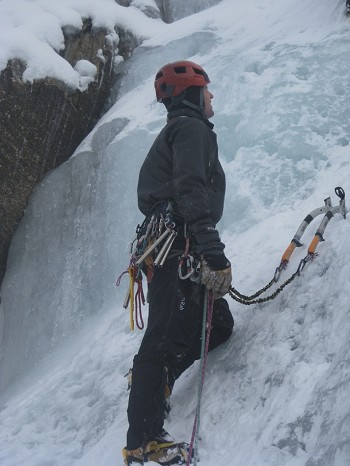
So I agreed to the review, partly because it's Mammut and they do shove out some pretty quality kit, and also I needed a new lid for the winter season. I have a small head (despite what some of my mates might tell you) and the Tripod 2 comes in two sizes. I chose the 48cm–53cm rather than the 53-61cm version, which fits fine both with and without a fleece hat on. It's a composite foam with a shell of plastic – pretty standard these days for folks looking for a lightweight lid for all seasons. It sits on your hair (or in my case largely skin) on a matrix of soft fabric, held onto the foam by Velcro.
So what's to like? It comes in red and orange (well it is Mammut), which always looks good compared to say white or pale blue ... if you get my drift. The ventilation is good, and (interestingly for winter) the ventilation holes are wider on the outside and angle inwards into the foam, which seemed to prevent any significant spindrift getting in. It has noticeably deep headtorch clips and, although I didn't use these (the bars open before dark in Italy), it's nice to know that once a torch is on it stays on.
"It has noticeably deep headtorch clips and, although I didn't use these (the bars open before dark in Italy), it's nice to know that once a torch is on it stays on."
The wrap of the helmet is reassuring – it covers both the forehead and the back of the skull – I always think if you're going to wear one of the damn things it might as well cover as much as possible. Be just my luck to be wearing one of those stripped down things and be hit square in the forehead looking up at my mate's progress. The foam is noticeably thicker than some of the rivals – but this didn't seem to make it sit higher on the head or look/feel unwieldly, even sitting over a fleece beanie.
Winter is always a good test of any kit, and helmets are no exception – starting with getting the thing in a rucsac already full of rope, hardware, flasks and clothes. I hate having a helmet on the outside of the sac – too much like a D of E student on expedition for my liking. In fact the sole purpose of a helmet on the walk in is, in my opinion, to protect the butties. The Tripod 2 fulfilled this task well – because the cradle when set to its smallest size fits deep inside the shell making the fit within a rucsac easy – and saving those sandwiches from a good mashing.
"The sole purpose of a helmet on the walk in is, in my opinion, to protect the butties..."
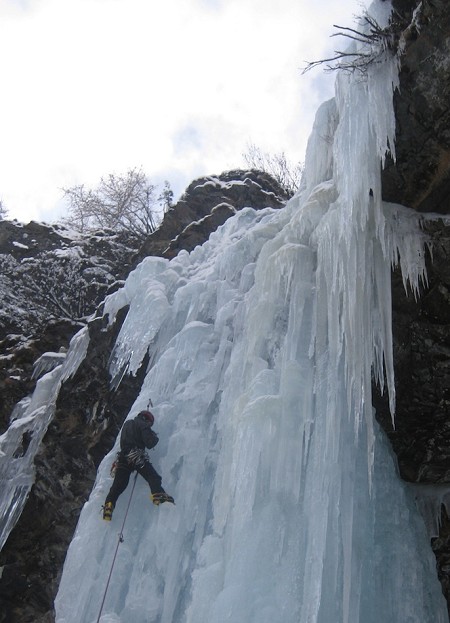
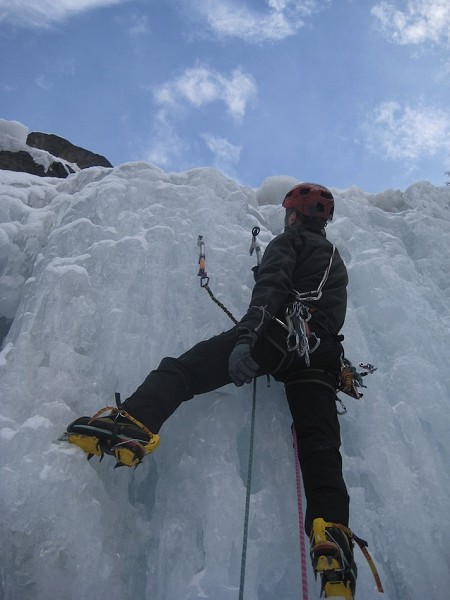
Mammut
- Weight: 250g
- In-mold helmet with EPS core and tough Microshell
- Large ventilation openings for good air circulation and heat discharge
- Ergonomic interior with comfortable padding
- Superlight and simple to adjust headband for quick fit
- Height- and size-adjustable headband
- All-round, fully adjustable chin strap for ideal fit
- 4 large and stable clips for headlamps
- Standard EN 12492
- UIAA standard 106
More info on the
Mammut website.
Once at the route, the cradle is very easy to adjust with mitts (yes I still wear Dachsteins on the walk in – stop sniggering at the back. Its easy to get baltic fingers using poles, and mitts prevent this. In fact when I was in Alaska the only bloke to have warm fingers throughout the trip was Paul in his Dachsteins – so look and learn). Once on, the chin strap can be easily clipped together, again whilst wearing thick gloves, and the job's a good 'un. Once on it is easy to forget it's there, like many of these newer lightweight jobbies.
"And in a very unscientific test around the table following several bottles of cheap red wine the boys thought if 'felt' slightly heavier than the nearest rival's equivalent."
So what's not to like?
Not a lot – the biggest criticism from the team was that you can't read the Mammut writing on the shell! Well if you're going to wear it flaunt it I say. And in a very unscientific test around the table following several bottles of cheap red wine the boys thought if 'felt' slightly heavier than the nearest rival's equivalent. However this was outweighed (ha ha) by the Tripod 2 appearing reassuringly more robust due to the thicker foam mentioned above.
So would I buy one?
Oh yes – but happily I don't need to now, and it is definitely my lid of choice – shame the rozzers won't let me wear it on my Honda...
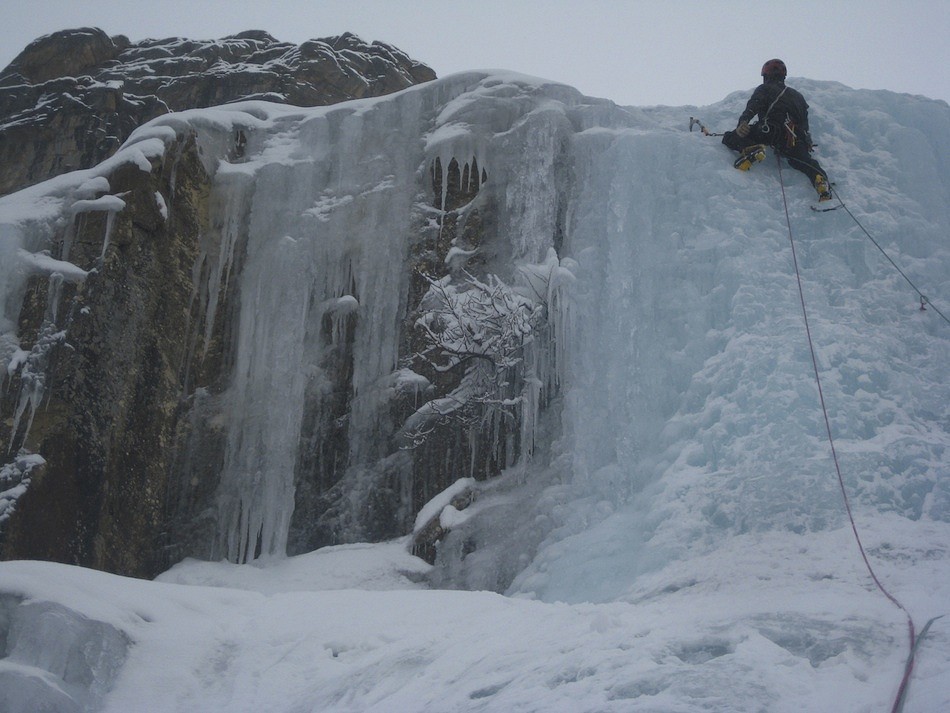
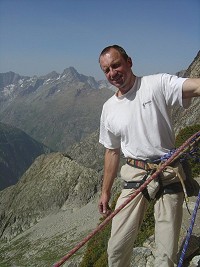
About Phil Baker
Phil has been climbing and caving for 34 years. He has climbed extensively in the UK, Alps and America including bigs walls in Yosemite, new ice routes in Norway and Denali in Alaska. His caving experinece is equally varied, with over 30 caves descended in the Vercors (including the Gouffre Berger three times) and new caves in Albania down to -450m. Phil holds the highest UK awards in climbing and caving and is an assessor for national climbing and caving awards. He currently runs the outdoor education servcice for a local authority, is married with two kids and his favourite food is pizza.

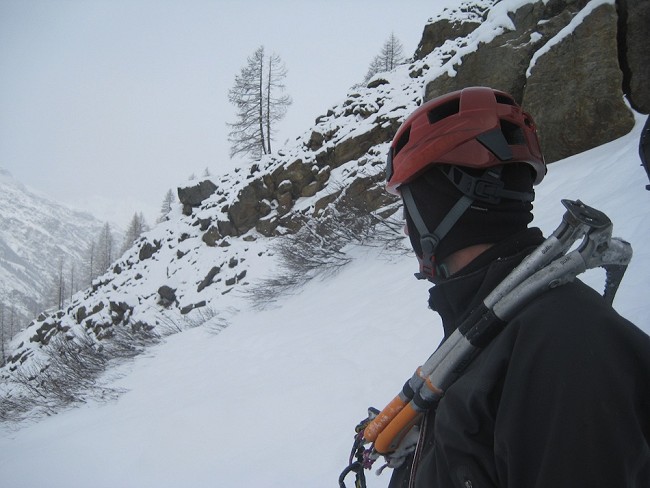
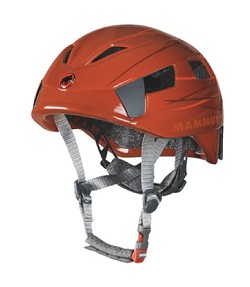





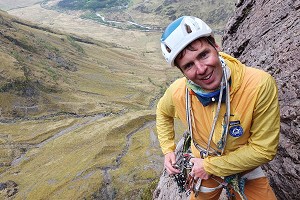
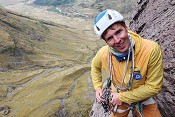
Comments